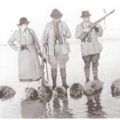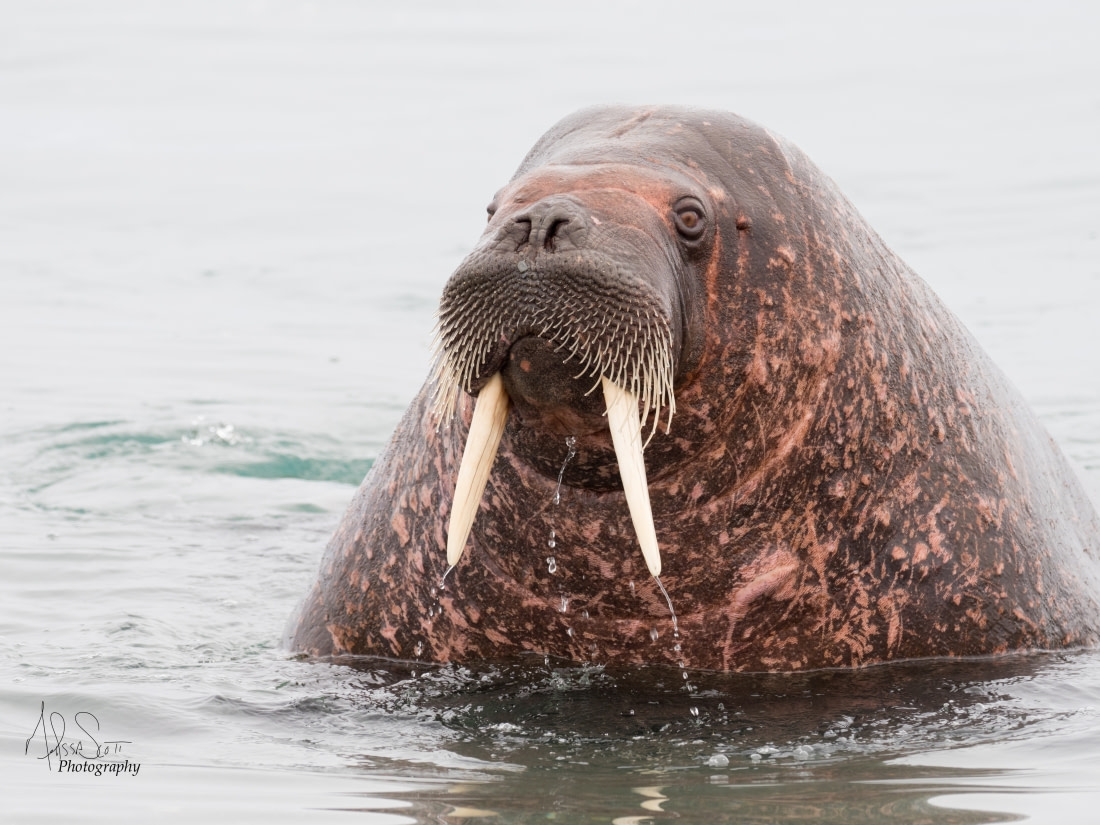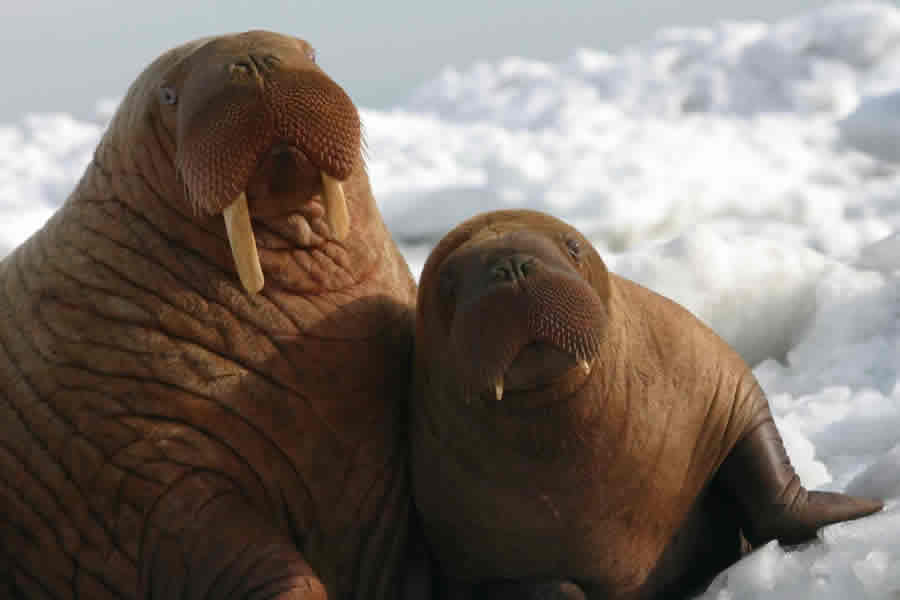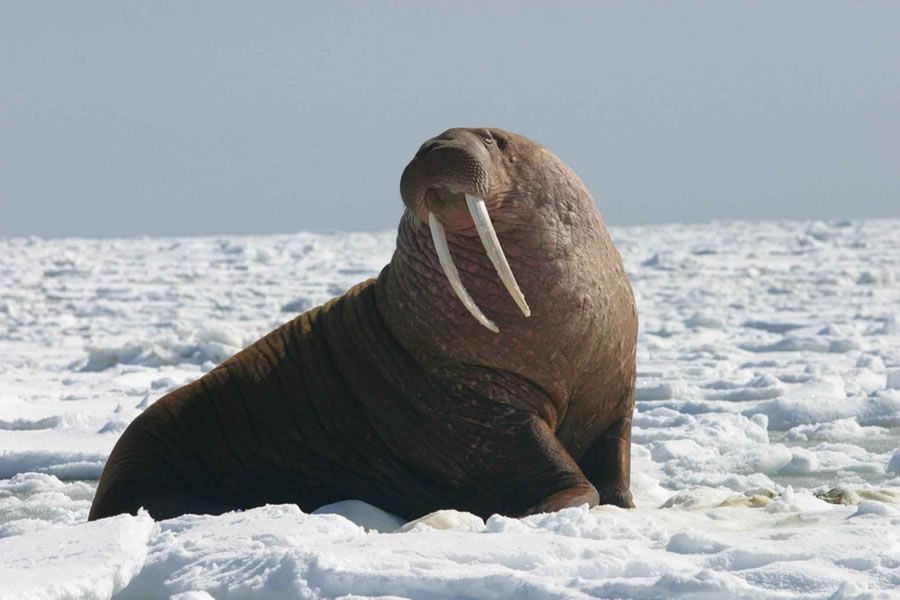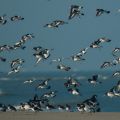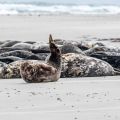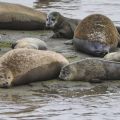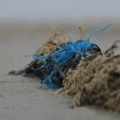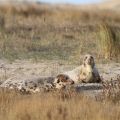Walruses (Odobenidae)
A family close to seals (Phocidae) is the walrus family. In terms of behaviour and body shape, they are very similar to seals and sea lions. Yet many walruses have one very recognisable feature: their tusks. Read on to get to know walruses a little better.
See also
Odobenidae
The family of walruses is also known in science as the Odobenidae . Like seals, walruses belong to the order Carnivora, the carnivorous mammals. This order also includes animals such as wolves, bears and lions.
Walruses are one of the three members of the Pinnipedia (pinnipeds). This group of mammals is special because they spend much of their lives in the water. Their front and hind legs have turned into fins after millions of years of evolution, allowing them to move very well in water. The other two members of this group are sea lions (Otariidae) and seals (Phocidae).
This family is a bit special because it only has one relative! It might be a bit confusing, but the only species in the walrus family (i.e. the Odobenidae) is the walrus (Odobenus rosmarus). All other species have unfortunately been extinct for a long time.
How do you recognize walruses?
Walruses, like other pinnipeds, have a large, rounded thorax. Their abdomen is relatively small, giving them a cone-shaped body. They have shorter front flippers than sea lions. Nevertheless, walruses can lean on these, allowing them to lift their head and thorax off the ground.
Walruses have a lot less fur than seals and sea lions. Adult males sometimes look as if they have no fur at all. To stay warm, walruses have a thick layer of blubber. It often looks like walruses have extremely many small rolls of fat, especially the adults.
The only species still alive today (Odobenus rosmarus) has very recognisable tusks protruding down from the upper jaw. Fossils of very old walrus species show that many of their extinct relatives also had tusks.
Walking and swimming
Walruses on land
Walruses, like sea lions, can fold their rear flippers forward. This allows sea lions to lift their entire body off the ground to walk. Walruses cannot do that: they are too heavy for that.
Walruses move over land by dragging themselves forward with their front flippers. In the process, they push off with their rear flippers. The belly does not come off the ground in the process, so it slides over the ground. On land, they are somewhat more clumsy than sea lions.
Walruses in water
The way walruses move in the water is very similar to how seals do. They use their rear flippers to gain speed, but do not hold them flat against each other. They paddle alternately with their rear flippers while moving the abdomen back and forth.
Happily together
Walruses are social animals. On land, they lie down together in very close groups to rest. They also like to swim in groups in the water. Outside the mating season, males and females will usually live separately from each other. Walruses are pregnant longer and take care of their pups a lot longer than seals and sea lions.
During the mating season, different groups of males and females come together in a large group. The males then fight each other for a piece of territory. These fights can be fierce.
Where do walruses live?
The only walrus species alive today is found around the Arctic. They need shallow water with a soft seabed to hunt well. Therefore, they usually do not go very far from the shore. Walruses often rest in groups on sandy or rocky shorelines, as well as on the ice.
Walruses also used to occur a lot further south. Archaeodobenus, a primordial walrus, lived around Japan about 6 million years ago. At the same time, species also lived around California, such as the Gomphotaria. It seems they all lived in the northern hemisphere, as did the only surviving species.

